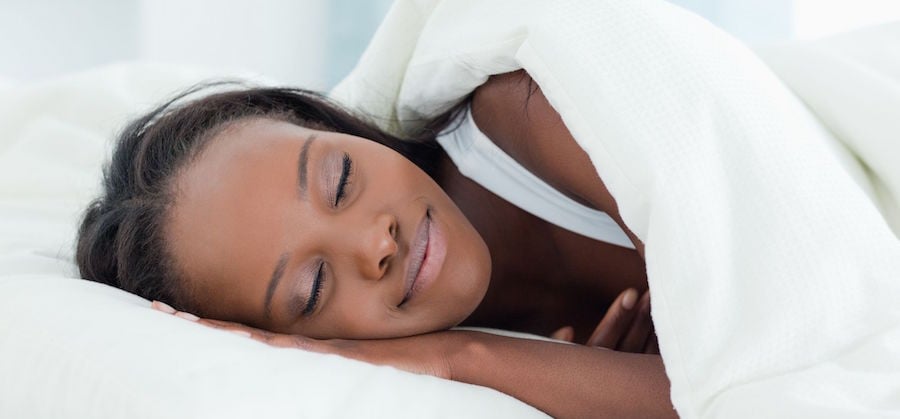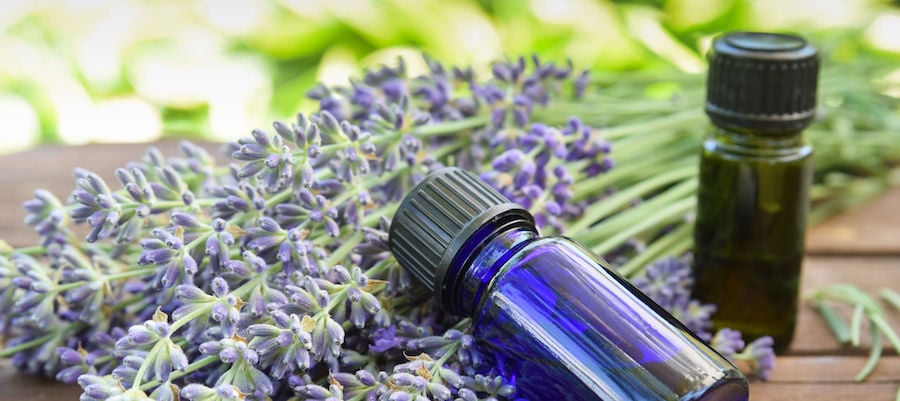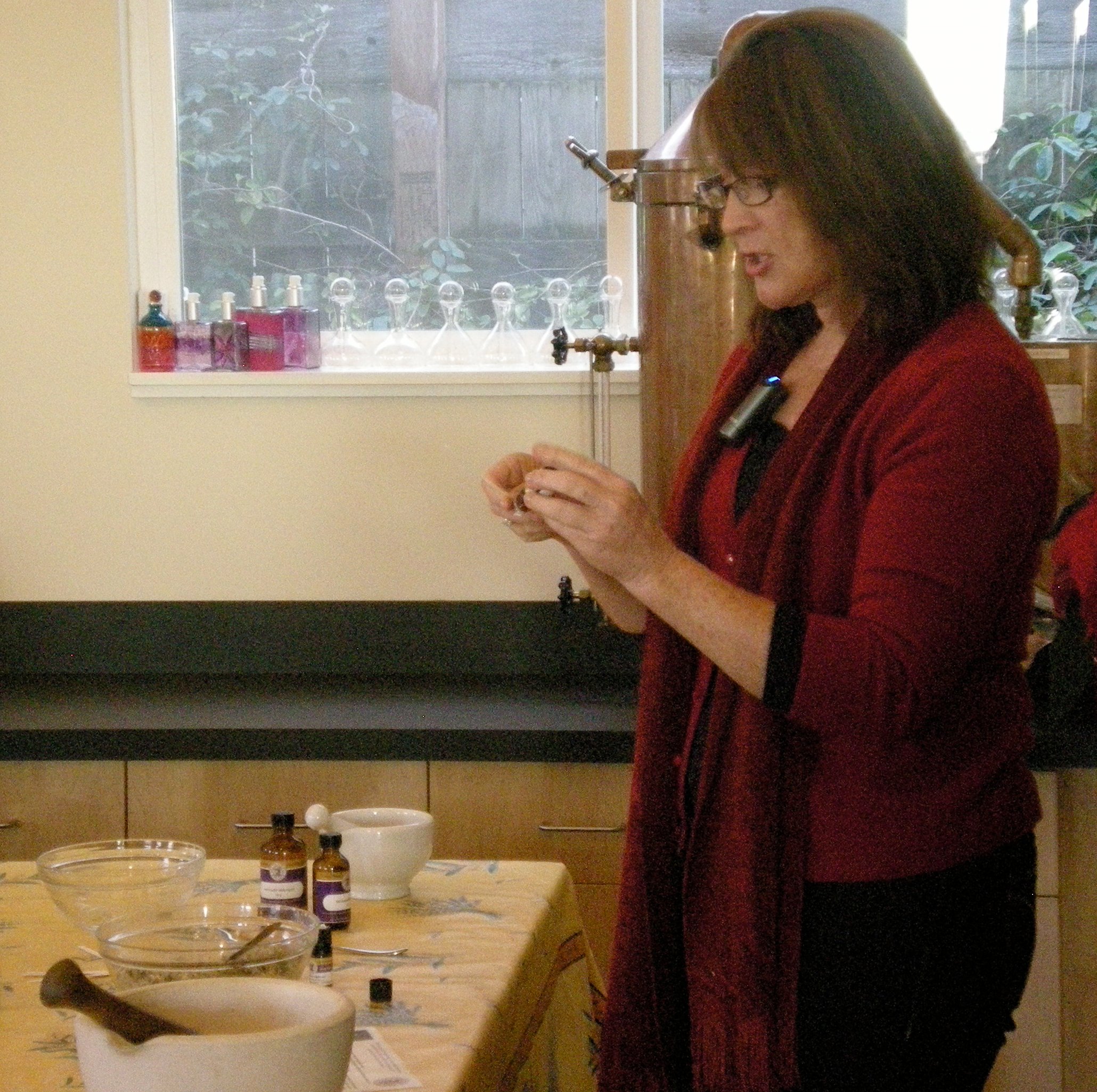You’ve heard of lavender Lavandula angustifolia essential oil, right? It’s arguably the most researched essential oil and perhaps the most visible on the shelves of our natural health and beauty supply stores. Lavender lotion, lavender sleep masks, lavender bath bombs, lavender sachets, lavender-scented shampoo and conditioner … it’s everywhere! And that’s not only because lavender has been used in baths since the Roman times; lavender L. angustifolia essential oil also has a well-developed body of research backing its effectiveness.
It’s an exciting time in the holistic aromatherapy industry! In addition to lavender, there are several essential oils being researched as aromatherapy products to support symptoms of some of our most common complaints like stress, sleeplessness, and everyday aches and pains.
Here’s a brief discussion of just a fraction of the research studies making big strides in the aromatherapy products industry:
Intro to Calming Essential Oils
Essential oils with soothing and relaxing qualities are known as anxiolytic oils and include:
- Lavender L. angustifolia
- Rose Rosa damascena (Mill.)
- Orange Citrus sinensis (Osbeck)
- Bergamot Citrus aurantium (L.)
- Lemon Citrus limonum (Risso)
- Sandalwood Santalum album (L.)
- Clary sage Salvia sclarea (L.)
- Roman chamomile Chamaemelum nobile (L.)
- Geranium Pelargonium graveolens (L'Her.)
Lavender Essential Oil Exposed
Let me tell you some of the wonderful things about lavender. Several double-blind, placebo-control studies support its anxiolytic properties and its ability to soothe stress.
Inhaling lavender L. angustifolia essential oil not only boosts mood, it also produces changes at a physiological level. People exposed to lavender essential oil reported they felt more active, fresher, and relaxed. Why? Inhalation caused a significant decrease of blood pressure and heart rate, and lowered skin temperature. There was also an increase in the power of theta (4-8 Hz) and alpha (8-13 Hz) brain waves. An increase in these brain waves is often observed during meditation, too, and suggests a calmer state of mind.[1]
The calming effect of lavender as a stand-alone and in aromatherapy essential oil blends has been put to the test in different stressful situations, like the dentist’s office and during exams. A blend of lavender L. angustifolia, bergamot C. aurantium, and cedarwood Cedrus atlantica (G.Manetti) (in the ratio 2:1:1) essential oils was shown to reduce anxiety in patients undergoing radiation treatment. Wow, right?
Interestingly, the essential oil blend was much more effective than a synthetic fragrance used in the control group.[2] An excellent example of why using quality and pure essential oils is so important when it comes to getting a desirable outcome.
In another study, a lavender L. angustifolia, peppermint Mentha ×piperita (L.), rosemary Rosmarinus officinalis (L.), and clary sage S. sclarea combo was administered to a group of nursing students and found to decrease perceived stress and reduce anxiety.[3]
Do you know any nurses? They might want to give lavender a try! Intensive care nurses who used a topical application of lavender L. angustifolia (6% dilution) and clary sage S. sclaria (4 % dilution) reported decreased perception of stress during three 12-hour work shifts.[4]
But, not only lavender … if you have lavandin on hand, that could work, too. An inhalation of lavandin Lavandula intermedia (Emeric ex Loisel.) essential oil was shown to reduce stress among patients waiting for surgery.[5]
The Mind Body Connection
As mentioned earlier, these studies show a very close connection between state of mind, physiological responses, and feelings. For example, inhalation of lavender L. angustifolia and rosemary R. officinalis essential oils can reduce the production of cortisol, a major stress hormone.[6]
Calming properties of essential oils were also demonstrated by studies conducted on animals. These studies often provide more detailed information on the mechanism of action (a.k.a. the biochemical reaction that produces the desired healing effect) and provide a useful comparison of aromatherapy and conventional antidepressant drugs.
For example, a study conducted on mice showed that angelica Angelica archangelica (L.) essential oil has an anxiolytic-like effect (remember, that means calming) and performs similar to diazepam, a common anti-anxiety drug.[7]
Another study with mice and lemon C. limonum essential oil suggested that the oil’s anxiolytic and antidepressant-like effects happen because the oil can actually influence the central neurotransmitter system. This is the same reaction that’s been found in herbs used with depression, like St. John’s wort Hypericum perforatum (L.).[8]

Image Copyright: Wavebreak Media Ltd / 123RF Stock Photo
Essential Oils and Sleep Support
If you're someone who has a hard time catching enough zzzzz’s, diffusing essential oils in your bedroom can create a calm and peaceful atmosphere conducive for sleep.
Try lavender L. angustifolia, German chamomile German Matricaria recutita (L.), Roman chamomile Chamaemelum nobile (L.), and/or ylang ylang Cananga odorata (Lam.) var. genuina to promote greater relaxation.
Our friend lavender is again the front-runner in current research. Lavender L. angustifolia is the most studied essential oil for supporting healthy sleep patterns.
A study conducted on healthy sleepers showed lavender L. angustifolia essential oil acts as a mild sedative. When diffused at night, it reduced the time necessary to fall asleep and improved sleep quality.[9]
Another look into lavender L. angustifolia focused on poor sleepers and showed similar results, especially among women and younger adults with milder sleep issues.[10] But, middle-aged women have a window of opportunity, too. A different study focused specifically on the unique symptoms of women in menopausal transition showed lavender could (again!) help improve sleep quality.[11]
One more sleep tip: massage with aromatherapy products.
Aroma massage before sleep can be an effective way to deal with restless sleep. A blend of lavender L. angustifolia, marjoram Origanum majorana (L.), ylang ylang C. odorata var. genuina, and neroli Citrus aurantium (L.) (the ratio used was 20:10:15:2 in a 3% dilution) was shown to be effective, so give it a try![12]
Soothing Essential Oils for Everyday Pain Management
Did you know we’re currently seeing a growing opioid epidemic? The World Health Organization (WHO) estimates that 13.5 million people take opioids globally. With a serious obligation to explore alternative approaches to pain management, researchers are starting to study aromatherapy for its potential benefits.
Again, here comes lavender at the top of the list. Two studies suggest lavender might reduce pain, one during acupuncture needle insertion and one after cesarean section.[13, 14] Also, a recent study showed that post-operative herniated disc pain was reduced after lavender L. angustifolia essential oil inhalation. Sixty patients were divided into two groups; one group received a lavender inhalation, and the other group received an almond inhalation. While the difference in pain severity between the two groups was not significant at either four or eight hours after post-operative pain onset, the difference was significant in the lavender group after 12 hours, suggesting lavender inhalation may be effective for acute pain post-surgery to reduce discomfort.[15]
Also, an older study showed that pain intensity and unpleasantness were reduced after lavender L. angustifolia inhalation. What’s most interesting about this study is that there was actually no change in quantitative pain sensitivity. The change was in the patients’ perception of pain and global impression of treatment outcome.[16]
But, then there’s New Zealand tea tree, or manuka, which we haven’t talked about yet. A 2010 study found that manuka Leptospermum scoparium (Forst.) essential oil delayed the onset of mucositis (inflammation in the digestive track, which can result from chemotherapy and radiation for cancer … ouch!) and reduced pain and oral symptoms for head and neck cancer patients undergoing radiation.[17]
And, don’t forget our culinary favorite, rosemary R. officinalis oil, which was found to decrease pain using a rat model of arthritic pain. Imagine that simply sniffing rosemary essential oil can potentially activate your built-in serotonin receptors and endogenous opioids, both of which can produce an analgesic-type effect.[18] A 2017 study also showed the ursolic acid in rosemary has a synergistic relationship with the antinociceptive (pain blocking) effect of ketorolac (a nonsteroidal anti-inflammatory drug used with pain), which means the effect could be greater when the NSAID and rosemary are used together.[19]
Next comes peppermint M. ×piperita. Peppermint essential oil is thought to have a direct inhibitory effect on sensitized pain receptors. It might also act centrally to alter pain perception. This is especially exciting for pain associated with myalgia and neuralgia where a topical application may provide some much-needed relief.[20]
Lastly, here comes German chamomile P. graveolens. An in vitro study found that the chemical constituent alpha-bisabolol is responsible for the oil’s antinociceptive effect (that means, it blocks the detection of pain) by decreasing peripheral nerve excitability (which has symptoms like muscle twitching, stiffness, and cramps).[21]
One last tip: when it comes to pain, there are several options. If one essential oil does not work for your specific symptoms and physicality, try another. But, you want to do so cautiously and safely.
Remember, play it safe. Always consult with a Registered Aromatherapist and/or your trusted physician before using essential oils (the Aromatherapy Registration Council maintains a national registry) or sign up for an aromatherapy course with ACHS. Learn how to safely select, blend, test, and apply aromatherapy products for personal health and wellness in our accredited Certificate in Aromatherapy (CERT Aroma), Diploma in Aromatherapy – Master Aromatherapist, Associate of Applied Science in CAM with an aromatherapy focus, or Master of Science in Aromatherapy program. Pick the level of study that’s right for your goals!
Disclosure of Material Connection: I am the Former President and Founder of American College of Healthcare Sciences, the Institution that publishes this blog. However, all opinions are my own. This blog may contain affiliate links. I am disclosing this in accordance with the Federal Trade Commission’s 16 CFR, Part 255: “Guides Concerning the Use of Endorsements and Testimonials in Advertising.”
This article is for informational purposes only. It is not intended to treat, diagnose, cure, or prevent disease. This article has not been reviewed by the FDA. Always consult with your primary care physician or naturopathic doctor before making any significant changes to your health and wellness routine.
References
[1] Sayorwan, W., Siripornpanich, V., Piriyapunyaporn, T., Hongratanaworakit, T., Kotchabhakdi, N., & Ruangrungsi, N. (2012). The effects of lavender oil inhalation on emotional states, autonomic nervous system, and brain electrical activity. J Med Assoc Thai, 95(4), 598-606.
[2] Graham, P. (2003). Inhalation aromatherapy during radiotherapy: results of a placebo-controlled double-blind randomized trial. Journal of Clinical Oncology, 21(12), 2372-2376. Retrieved from http://dx.doi.org/10.1200/jco.2003.10.126
[3] Park, M.K. & Lee, E.S. (2004). [The effect of aroma inhalation method on stress responses of nursing students]. Taehan Kanho Hakhoe Chi., 34(2), 344-51.
[4] Pemberton, E. & Turpin, P.G. (2008). The effect of essential oils on work-related stress in intensive care unit nurses. Holist Nurs Pract., 22(2), 97-102.
[5] Braden, R., Reichow, S., & Halm, M. (2009). The use of the essential oil lavandin to reduce preoperative anxiety in surgical patients. Journal of Perianesthesia Nursing, 24(6), 348-355.
[6] Atsumi, T. & Tonosaki, K. (2007). Smelling lavender and rosemary increases free radical scavenging activity and decreases cortisol level in saliva. Psychiatry Res., 150(1), 89-96.
[7] Chen, S.W., Min, L., Li, W.J., Kong, W.X., Li, J.F., & Zhang, Y.J. (2004). The effects of angelica essential oil in three murine tests of anxiety. Pharmacol Biochem Behav., 79(2), 377-82.
[8] Omiya, M., Takeuchi, T., & Harada, E. (2006). Lemon oil vapor causes an anti-stress effect via modulating the 5-HT and DA activities in mice. Behav Brain Res., 172(2), 240-9.
[9] Goel, N., Kim, H., & Lao, R. (2005). An olfactory stimulus modifies nighttime sleep in young men and women. Chronobiology International, 22(5), 889-904. Retrieved from http://dx.doi.org/10.1080/07420520500263276
[10] Lewith, G., Godfrey, A., & Prescott, P. (2005). A single-blinded, randomized pilot study evaluating the aroma of Lavandula augustifolia as a treatment for mild insomnia. The Journal of Alternative And Complementary Medicine, 11(4), 631-637. Retrieved from http://dx.doi.org/10.1089/acm.2005.11.631
[11] Chien, L., Cheng, S., & Liu, C. (2012). The effect of lavender aromatherapy on autonomic nervous yystem in midlife women with insomnia. Evidence-Based Complementary and Alternative Medicine, 2012, 1-8. Retrieved from http://dx.doi.org/10.1155/2012/740813
[12] Ju, M-S., Lee, S., Bae, I., Hur, M-H., Seong, K., & Lee, M.S. (2013). Effects of aroma massage on home blood pressure, ambulatory blood pressure, and sleep quality in middle-aged women with hypertension. Evidence-Based Complementary and Alternative Medicine, 2013, 1-7. Retrieved from http://dx.doi.org/10.1155/2013/403251
[13] Kim, S., Kim, H., Yeo, J., Hong, S., Lee, J., & Jeon, Y. (2011). The effect of lavender oil on stress, bispectral index values, and needle insertion pain in volunteers. The Journal of Alternative and Complementary Medicine, 17(9), 823-826. Retrieved from http://dx.doi.org/10.1089/acm.2010.0644
[14] Olapour, A., Behaeen, K., Akhondzadeh, R., Soltani, F., al Sadat Razavi, F., & Bekhradi, R. (2013). The Effect of Inhalation of Aromatherapy Blend containing Lavender Essential Oil on Cesarean Postoperative Pain. Anesthesiology And Pain Medicine, 3(1), 203-7.
[15] Arjmand, G.R., Bahraminezhad, N., Jafari, S., Faghihzadeh, S., Lotfinia, I., & Shimia, M. (2017). The effect of inhalation of aromatherapy lavender (essential oil) on post-operative discectomy pain. University of Tabriz.
[16] Gedney, J.J., Glover, T.L., & Fillingim, R.B. (2004). Sensory and affective pain discrimination after inhalation of essential oils. Psychosom Med., 66(4), 599-606.
[17] Maddocks-Jennings, W., Wilkinson, J.M., Cavanagh, H.M., & Shillington, D. (2009). Evaluating the effects of the essential oils Leptospermum scoparium (manuka) and Kunzea ericoides (kanuka) on radiotherapy induced mucositis: a randomized, placebo controlled feasibility study. Eur J Oncol Nurs.,13(2), 87-93.
[18] Martínez, A.L., González-Trujano, M.E., Pellicer, F., López-Muñoz, F.J., & Navarrete, A. (2009). Antinociceptive effect and GC/MS analysis of Rosmarinus officinalis L. essential oil from its aerial parts. Planta Med., 75(5), 508-11.
[19] Beltrán-Villalobosa, K., Déciga-Camposa, M., Aguilar-Mariscalb, H., González-Trujanoc, M.E., Martínez-Salazara, M.F., de los Ángeles Ramírez-Cisneros, M., et al. (2017). Synergistic antinociceptive interaction of Syzygium aromaticum or Rosmarinus officinalis coadministered with ketorolac in rats. Biomedicine & Pharmacotherapy, 94(2017), 858-864.
[20] Davies, S.J., Harding, L.M., & Baranowski, A.P. (2002). A novel treatment of postherpetic neuralgia using peppermint oil. Clin J Pain, 18, 200-2.
[21] Alves Ade, M., Gonçalves, J.C., Cruz, J.S., & Araújo, D.A. (2010). Evaluation of the sesquiterpene (-)-alpha-bisabolol as a novel peripheral nervous blocker. Neurosci Lett., 472(1), 11-5.
Graham, P. (2003). Inhalation Aromatherapy During Radiotherapy: Results of a Placebo-Controlled Double-Blind Randomized Trial. Journal Of Clinical Oncology, 21(12), 2372-2376. http://dx.doi.org/10.1200/jco.2003.10.126





